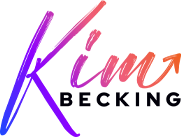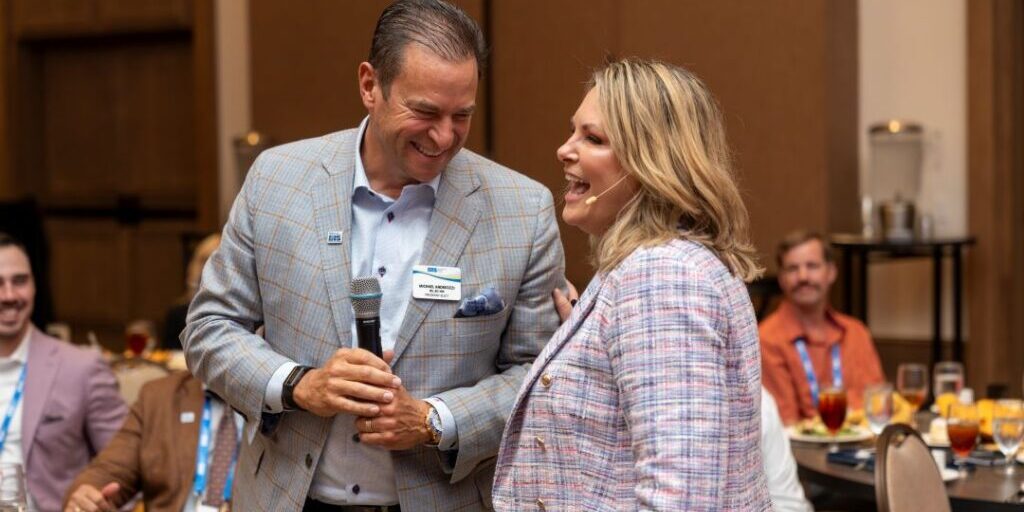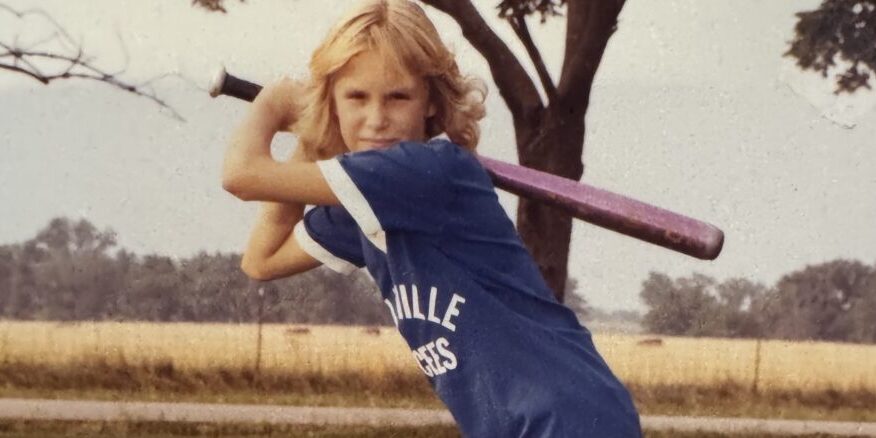Is Resilience a Mindset—or a Muscle?
It comes down to how you exercise resilience—starting with how you define it.
There were two banner buzzwords that emerged from the pandemic: Burnout and Resilience. At first glance, these two seem at odds with each other: one flames out while the other powers on. While we can empathize with burnout, we as a society glorify the resilient torch bearers—the ones who hunker down, get it done, and never give up, even (and especially) when we’re tired, when it’s hard, and when we’re so…very…over it.
Some leaders talk about resilience with their teams as if those who suffer from burnout lacked such a skill. Quite the contrary, we’re finding out, as it’s often the most “resilient” among us who are going down in flames, having pushed too hard for too long without stopping— long before the last few years. The effort-recovery theory suggests that our traditional patterns of resilience leave little room for breaks and necessary restoration. This impacts productivity, leads to disengagement and deterioration in performance, which leads to additional effort to catch up—and the cycle of overwhelm, stress and burnout continues in a never-ending cycle.
What most of us have forgotten—and perhaps what we’ve never understood in the first place—is that resilience is not a mental immunity to exhaustion or a force field for overwhelm or a hard rock the waves of change break against.
We’ve come to see resilience as a mark of mental stamina, instead of what it truly is—a source of mental, emotional and behavioral flexibility and strength.
While resilience certainly is a mindset, it can help to treat it like a muscle.
To truly build resilience—and to use it for greater sustainability, endurance, and flexibility in a rapidly changing world—we need to treat it just like we would our bicep and tricep muscles. High-performing athletes will tell you that rest days allow muscles to replenish their energy stores, reducing muscle fatigue and giving your body a chance to repair and strengthen itself. Overexercising—workouts without recovery—inevitably lead to stress, straining, and injury.
No athlete in the world can keep going without taking breaks for their bodies. Football players sit on the bench between plays. Sprinters ice their muscles and take days off from running. Can you imagine if an Olympic swimmer swam laps 24/7?
Athletes take breaks. They eat and sleep well. They take vitamins to re-energize and give their bodies the time to heal so they don’t just bounce back, they bounce forward. They are experts in balancing grit—the power to push through— with grace. Because they know that grit without grace isn’t sustainable.
Resilience works much in the same way. Even if you never step onto a football field or competitively swim, the best way to exercise resilience is to know when and where to push through, carry on, and toughen up—and when to release, rest, and refuel.
Because if you attempt to push through at all costs, it will cost you. Your health and well-being. Your productivity and performance. Your job. Your relationships.
I know you hear me. And it’s usually at this point people say to me: “But I can’t stop. I don’t have time to rest. I have too much to do and not enough time. I don’t have room for grace.”
I always sense the conviction in those statements. Those beliefs are so adamant that they feel like facts.
The truth is that you DO have enough room for grace, space, and a place to stop. I’ve seen countless (countless!) times where people, once fully rested and recovered, bounced forward in a way that ran circles around their former selves.
Because it’s hard to discern how much you’re getting in your own way until you’ve moved beyond your former exhausted, stressed out self. Stress has a sneaky way of making us believe that things won’t or can’t get better or easier. Resilience—in all of its capacity for recovery—reminds us that things can always get better.
Some of my most important work as a keynote speaker and resilience expert is helping people redefine resilience so they can create unstoppable momentum—the kind that carries them forward, even when (and because!) they take a breather.
Because resilience isn’t about “enduring” or “powering through at all costs” or simply bouncing back; it’s about giving yourself the grace and permission to pause, rest and refuel so you can do more than bounce back. You can bounce forward, stronger and better than ever!
To celebrate this new definition of resilience in your own life, here are three of my Resilience Boosters to refuel and reinvigorate your day—at work and at home—in big and small ways.
Resilience Booster #1: Refuel.
One of the simplest things you can do to exercise resilience is to focus on The Big Four. Think of it like planting a SEED.
- Sleep.
- Eat.
- Exercise.
- Drink water.
Each time you deprive yourself of one of these four, you deplete energy stores and contribute to a counterproductive cycle—a cycle that can include poor concentration, irritability, physical aches, and even hopelessness. In fact, ignoring these all-too-common early burnout symptoms can make you 23% more likely to visit the emergency room.
What this looks like in practice will be different for everyone; research suggests that daily recovery is essential, versus waiting for weekends and vacations to implement self-care. We know the importance of SEED, yet we allow ourselves to fall into an “I don’t have the time for that” rationale. There is no better time than NOW to take action and start developing your SEED rhythm. The important part is that you take action; you’re worth it and there is nothing more important than your health.
How much sleep do you need? What foods fuel you best? What exercises remind you what it feels to be alive? Explore the possibilities, give yourself grace when you fall short, and then stay focused on your own SEED rhythm!
Resilience Booster #2: Focus on the Flex
Failure and challenge are part of life and inevitable facets of business and leadership. It’s how we learn to “flex” our resilience muscles in response to challenges that will either propel us forward or hold us back. The trick isn’t in how much force we use to fight it, but rather how we allow adversity to fuel our flexibility. Because it’s not adversity, change and challenges that lead to growth; it’s how YOU respond to it. Resilience is a mindset, a muscle, and an intentional choice.
When inevitable challenges come, while we may dig in and grit up, we also have the choice to stay grounded in possibility, grace, and hope…to stop, shift, and reframe. Shift from judgment and concern to curiosity and gratitude. Cultivate hope as you practice gratitude and celebrate the good that’s still happening around you. And most importantly, allow yourself the space and grace to rest.
When you stop, shift and reframe your mindset and see every roadblock as an opportunity to show what you’re made of, that is healthy grit. When you give yourself time to practice gratitude, reflecting on what you’ve done, the lessons learned and who you’ve become, that is grace. And we need the flex of both!
Resilience Booster #3: Create a Container for Recovery.
One of my favorite pieces of advice for leaders is having them develop a “Not-to-Do” list. It’s a clear and simple way to set—and hold—boundaries for yourself as you create room for grace, self-care, and replenishment, especially in a work-from-anywhere world with the blurred boundaries of work and home.
At Work:
- No scheduling back-to-back meetings without 5-15 minute breaks for the restroom, a stretch, or a snack between meetings.
- No working at your desk through lunch. You are human—you need to eat, use the bathroom, take breaks, breathe, etc.
- No sending emails after a certain time. You set the tone. Instead of sending emails at 8pm to your team, schedule them to go out the next morning during pre-established work hours.
- No doing things that should be delegated or outsourced. Just because you can, doesn’t mean you should. For me, an entrepreneur, this means NOT doing my own taxes or my own graphic design. Just because I can, doesn’t mean I should.
At Home:
- No phones at the dinner table. Be present.
- No laptops, phones or email during specific times at night while at home. .
- No doing your kids’ laundry after they are 10 years old 🙂 This is mine—feel free to steal the idea if you have kids. It’s so freeing.
Express these boundaries when others try to cross them. When you prioritize yourself, your team will recognize their needs as well, leading to a positive, healthy work environment filled with people ready and fresh for the day. Identify where you need to set boundaries and hold yourself accountable not to cross them. Get creative. What would be on your Not-to-Do List? Feel free to share with me!
You can refuel, flex, and recover your resilience mindset AND muscle! I’ve got loads more to share with you on using this muscle, resilience boosters, and other mindset shifts to keep you growing and thriving in this rapidly changing world. And don’t forget to come back for my next blog where I’ll reveal the secrets on how you can harness the power of mindset, resilience and adaptability to thrive in a world that never slows down. Hint: It starts with the Stop, Shift and Reframe model – a powerful solution for navigating the relentless tides of change and building Unstoppable Momentum no matter what!
About Kim Becking:
Kim Becking is an engaging, high-energy, fun and impactful international keynote speaker, change and resilience expert, consultant and award-winning author who empowers and inspires leaders, teams and organizations to build a Momentum Mindset® so they can be more adaptable, resilient and ready for what’s next in this rapidly changing world that never slows down.
Follow Kim on LinkedIN for more insights, tips and strategies to build Unstoppable Momentum.





